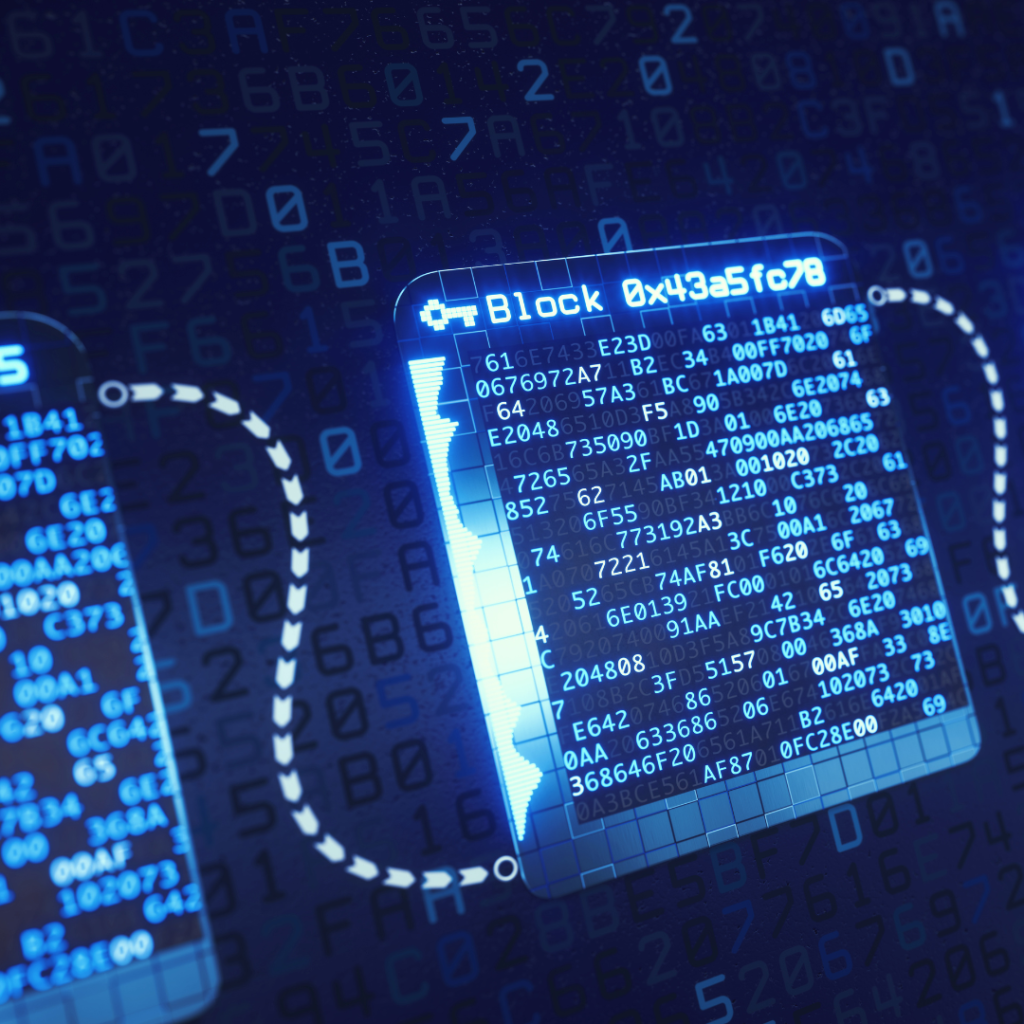Known as the technology behind cryptocurrencies, Blockchain is gaining momentum in the fields of humanitarian and development aid, and is increasingly being used by humanitarian agencies in their global response, including the UN System and its Agencies.
What is blockchain?
Blockchain is defined as a common shared and decentralised database “whose state is collectively maintained by the network in a decentralised fashion”. This means that anyone can use the technology without being regulated by any other third party, and that information, once uploaded, cannot be manipulated by other participants. Blockchain technology can be continuously updated and verified by its users, but other people who have access won’t be able to change that record. The database combines several existing technologies, and it enables multiple participants to share information and to transfer digital assets in a fast, tracked, and secure way.
Blockchain in humanitarian global response
In the fast and ever-changing environment of humanitarian aid, non-governmental organizations must always find innovative ways to deliver aid in efficient and effective, transparent, and financially viable ways. Being an advanced, decentralized, secure and verifiable source of data, blockchain technology has the potential to be used in humanitarian response for the coordination of aid deliveries around the globe, for the management of information, data and crowdfunding, as well as for donor financing. In addition, this technology can also provide solutions to existing challenges in humanitarian assistance. It has been analysed by the International Center for Humanitarian Affairs, and can overcome the barriers to data sharing by providing an information marketplace that is publicly accessible to all users while ensuring information security. For example, lack of identification documents is a fundamental challenge in humanitarian response. Having basic documentation to verify one’s identity is fundamental to survival and security, and it is essential to access and obtain basic humanitarian assistance in a place of safety. However, an estimated one billion people worldwide live without any form of identification, either because they never had it in the first place, or because it was lost, stolen or confiscated while fleeing conflict, disaster or political persecution. In this regard, blockchain technology can help as it provides accessible and verifiable identification where a person can prove their existence and identity through a decentralised public database, where individuals own and control information and data. At the same time, this technology can also allow organizations to gather large quantities of data about populations and communities they are assisting by using the distributed database component, while maintaining data privacy of these populations by using a private blockchain that will allow only certain networks to gain access to those data.
Within the sphere of humanitarian aid deliveries, blockchain technology allows NGOs to have a better control on the distribution of humanitarian aid and ensure that funds reach the intended recipients by not only lowering transaction costs, but also tracking aid distribution and use. Blockchain, in fact, offers a way to introduce transparency in the supply chain as it could be used as a data platform to trace the origins, use and destination of humanitarian supplies. Being a shared but secure record of exchange, blockchain “can track what went into a product and who handled it along the way […], revealing the provenance of a product to everyone involved from originator to end user”.
Positive example of blockchain
As previously stated, the United Nations System and its Agencies are increasingly using blockchain technology to deliver humanitarian aid. Since 2017, in fact, the World Food Programme has been working with other organisations to bring cash-based assistance to refugees through blockchain technology. As part of the Building Blocks Programme, the world’s largest implementation of blockchain technology for humanitarian assistance which currently helps million people in Bangladesh and Jordan, WFP gives refugees cash value in the form of a food token or electronic voucher. This system allows recipients to make their own food purchase, while ensuring their anonymity as their personal details – such as name, date of birth or biometric data – are stored anywhere in the system. The use of biometrics, especially among vulnerable populations, has been criticised by some over the risks associated with storing their personal information. But where WFP uses this system of identification, this information is used only to identify the person making the transaction and the information are not stored in the database.
MOAS and NFTs
From the use of drones during our search and rescue activity in the Mediterranean Sea, to the development of an app to facilitate fundraising possibilities, MOAS has always used advanced technology in our humanitarian work worldwide. In fact, recently, MOAS has collaborated with the talented artist Miyuki Sugihara who has created a collection of wonderful watercolor paintings to support the #MOASMissionUkraine.
These paintings are non-fungible tokens (NFTs), meaning digital assets that represent real-world objects who can be sold and bought online through cryptocurrency. The paintings can be purchased at this link: https://opensea.io/collection/meyoukeysugi
Final considerations
Innovative technologies, such as the blockchain technology, offer new opportunities to non-governmental organizations while carrying out their humanitarian work as they provide a way to improve transparency and accountability. Blockchain technologies can definitely be a game changer in humanitarian programming.
If you are interested in the work of MOAS and our partners, please follow us on social media, sign up to our newsletter and share our content. You can also reach out to us any time via [email protected]. If you want to support our operations, please give what you can at www.moas.eu/donate

